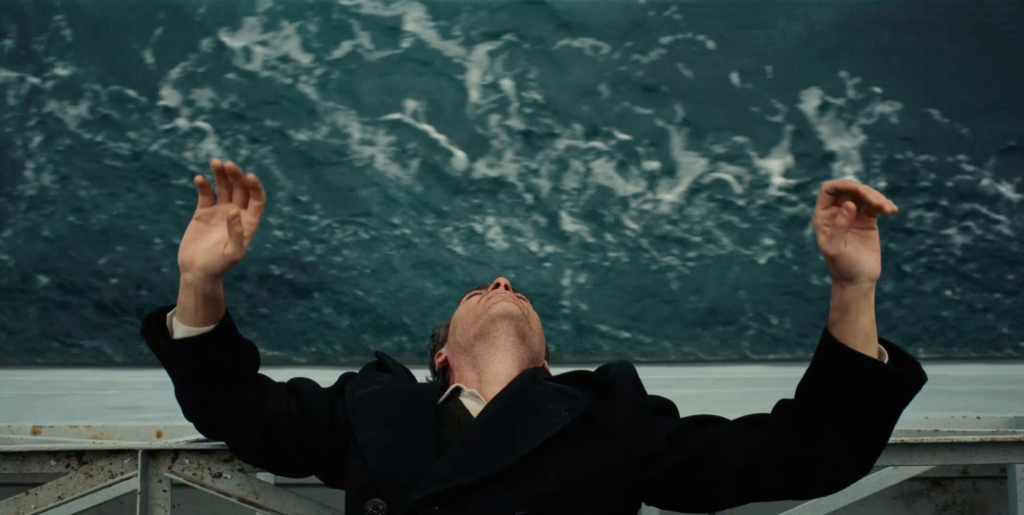
Compared with the cartoonish antics of Wes Anderson or the “realist” fantasies of Christopher Nolan, P.T. Anderson’s films, particularly those he has made in this century, exhibit an understanding of the medium and an aesthetic maturity beyond that of his peers. But what sets Paul Thomas Anderson apart from the whole of film is his ability to construct moral tales in a historical context.
Consider There Will Be Blood (2007), The Master (2012), and, to a lesser extent, Boogie Nights (1997). Each of these films deals with a particular concept of human interest. There Will Be Blood deals with the extent of man’s violence as it relates to his appetite, The Master analyzes the relationship between man’s inherent primitivism and the need to reel in such behavior with faith, and finally, Boogie Nights addresses the dangers of excess and wealth. Each of these concepts is in turn amplified by the historical circumstance of the narrative. For instance Boogie Nights, in which this relationship is the most obvious, relates a familiar tale of the moral corruptibility of one man when he reaches the epitome of his fame framed by the American pornography industry of the late seventies and early eighties, when drugs, sex and general excess reached legendary proportions. In this way Anderson creates a film that functions as both an intimate expose’ of a handful of characters’ trials and tribulations as much as it illuminates the function of their historical context on their lives.
When addressing There Will Be Blood, Anderson has to deal with a more obscure and distant facet of American history, so he wisely created a narrative that centered on two primary characters, Daniel Plainview (played by Daniel Day-Lewis) and Eli Sunday (played by Paul Dano). Plainview is animalistic in his pursuit of independent wealth in a capitalist society while Sunday is passively manipulative, seeking to procure wealth for the church where he is the central figure (though he represents his pursuit as being beneficiary to the community at large). In each character’s own way they are at the center of different powers within the community and it is in the vying for power in the community at large that they clash.
Likewise a certain polarity between two characters in conflict is central to Anderson’s most best film, The Master. The Master’s narrative begins at the close of WWII in the East and carries through till 1950, following the exploits of Freddie Quell (Joaquin Phoenix). Quell is a psychologically tormented character suffering from a form of post traumatic stress whose solutions to even the most mundane conflicts are abnormally violent and single minded in their resolve. On the opposite end of the spectrum is the film’s other primary character Lancaster Dodd, the Master (played by Phillip Seymour Hoffman). Dodd is educated, and the creator of a singularly twentieth century religion that Anderson clearly based on Hubbard’s Scientology. When these two characters meet, Dodd endeavors to “rid Quell of his animal instincts” while at the same time he is transfixed by Quell’s brutality. Quell’s relationship to Dodd differs in that he approaches Dodd with an exploitative eye, allowing himself to be the religion’s guinea pig in a vain attempt to remedy his post war anxieties. The socio-political circumstances of the late forties are uniquely conducive to the origins of both characters and ultimately their relationship to one another.
Yet, it is only There Will Be Blood and The Master that can be further unified for their aesthetics for they share a style as well as several narrative tropes absent from the much earlier Boogie Nights. Consider the characters in either film. Plainview and Dodd are self-made men of the upper class who come into conflicts of power with characters of the lower class, Quell and Sunday. Visually the two films exhibit an approach to composition and camera moves that seem directly derivative of Malick’s Days Of Heaven (1978) and Kubrick’s Barry Lyndon (1976). Both films utilize moving camera shots for operatic effect whilst framing the action to mirror the polarity of the characters engaged in conflict; placing a subject to the extreme edge of frame. There is also a prevalent minimalism to There Will Be Blood and The Master that separates the two films from Anderson’s other work. Unlike Boogie Nights and Magnolia (1999), these two films do not deal with a large ensemble and their Altman inspired interweaving narratives, but prefer to focus on one primary relationship. This narrative minimalism goes on further to influence the pace of montage in these two films, opting for a slow meditative tempo in an extreme contrast to Boogie Nights.
